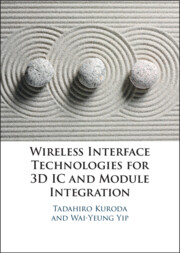4 - The Future of Computing
3D SRAM for Neural Network, eBrain
Published online by Cambridge University Press: 17 September 2021
Summary
Chapter 4 introduces our vision of how to use TCI and TLC to enable More-than-Moore system performance leaps. It first explores how TCI can be employed to stack SRAM to offer better memory access performance than stacked DRAM for deep neural network (DNN) accelerators to enable system-level innovations and possible paradigm shifts. The idea of an electronic right brain is then introduced and its difference from an electronic left brain implemented with the conventional von Neumann computer explained. SRAM stacked on an FPGA using TCI is then proposed as an implementation of a DNN-based electronic right brain. It further describes how, by storing configuration information in the SRAM, the FPGA can be reconfigured in real time to enable virtualization of different DNNs over time and hence temporal scaling of the right-brain hardware. It then explains how this can be combined with an electronic left brain based on a von Neumann computer also enhanced by TCI to construct a complete electronic brain, and how it can be scaled both up and down to address different performance needs. The chapter concludes by exploring how such an electronic brain can support trends in the IC industry and the emerging digital society.
Keywords
- Type
- Chapter
- Information
- Wireless Interface Technologies for 3D IC and Module Integration , pp. 291 - 321Publisher: Cambridge University PressPrint publication year: 2021



